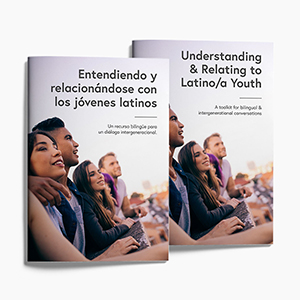Book Review: Understanding and Relating to Latina/o Youth: A Toolkit for Bilingual & Intergenerational Conversations

Understanding and Relating to Latina/o Youth: A Toolkit for Bilingual & Intergenerational Conversations by Fuller Institute, 2020. Total pages: 21.
Relating to Latino/a is a valuable tool for every all who desire to reach such young people in the North American Division. Fuller Institute has done a great job researching and studying the development of Youth Ministry in America. This is its first document that has Latino Youth as its specific subject of study. Every detail mentioned in this booklet can be applied to the reality of Adventist Hispanics and even multicultural churches across the USA.
The term Latina/o continues to morph in a variety of ways. Which term do you use? Hispanic? Spanish? Latino? Latinx? Latin@? The term gets used primarily in the United States for the purpose of awareness, promotion, and census data. For the term “Hispanic” think of language and culture—those who speak Spanish. For the term “Latina/o” think of the geography of Latin America—people from countries like Argentina, Panama, Mexico, and even Cuba and Puerto Rico. For the ending, think of gender inclusion since nouns ending in “o” are masculine while nouns ending in “a” are feminine. Rather than the awkward “Latina/o” some replace the “a/o” with “x” and others combine them into the symbol “@” (if that helps)! If you don’t know which term to use, just ask the person to whom you’re speaking, but you might need to ask in Spanish, especially if the person is a first-generation person in the United States.
This short, easy-to-read presentation can be used as a quick guide for Hispanic parents and leaders who have a genuine desire to develop a better relationship with their teens. It also targets churches who are struggling to reach or retain their second generation youth—children of immigrants.
The book’s title reveals a common theme of the Fuller Institute publications, which is the importance of relationships. It would have been even stronger had the book addressed the tendency toward performance-based, observable indicators adults desire in their young people. When this takes priority over relationships, it drives away the very young people it wants to maintain.
The power of family, the complex reality of immigration, the identity formation, the language and the importance of involvement in social justice movements are some of the elements that the author recognizes as pillars to understanding and reaching Latin@ youth.
Frequent questions Latin@ youth struggle with during their last years of high school include: Should I follow my dreams? Should I follow my academic career? Should I sacrifice those things to stay close to family? How much should family influence me now and in the future? This book contains important suggestions about how to help young people navigate these challenging years in which cultural and familial often clash.
A young person’s development of personal identity includes one’s background and one’s emerging self. This includes a person’s religious life. But does one come from their parent’s previous country or their current country? It can be stated, “Phrases like ‘Remember where you come from’ further reveal that Latino youth often find themselves caught between the message of the dominant culture, which promotes the self as a free agent, independent, autonomous and private; and a more fluid interdependent, relational, and embedded self, define by its relationships and contexts” (p. 6).
They live in a world very different from the one their parents departed. In many Hispanic homes the idea of “communication” barely exists. Sometimes it is due to the generational differences or the language barrier between parents who prefer Spanish and their teenagers who prefer English. This book comes with practical ideas on how to bridge these generational and linguistical gaps.
How do the migration stories of the parents and the Latin@ youth that were born outside of the US, shape their walk with Jesus in America today? The author presents a noteworthy evaluation of this issue, and provides some solid guidelines on how to approach migration as a building block of their identity.
Many Hispanic churches in America struggle with allowing their youth leaders to use in English in youth gatherings. They perceive the language as a threat to their children’s identity development as Latinos. This pamphlet includes a brief, but well-structured assessment of this that is very helpful.
Nearly all of the booklet’s content is descriptive and very general. Its small size might give you the impression that understanding Latin@ youth is simple; but it is not. Much more could have been written, especially when one considers the diversity of cultures within Lantin@ communities that make up “Latin@ Families.” Nevertheless, the book provides a series of thought-provoking questions that can start essential conversations and establish relationships.
For those genuinely interested in connecting and bringing out the best in Latin@ youth, this book it is a treasure. For youth leaders struggling because a pastor or the church leaders don’t understand the youth, this book could be a great place to start.
 |
Pastor Steven Fonseca serves as the Senior Pastor of the Princeton SDA Church and the Hispanic and Portuguese congregations of West Long Branch in NJ. |
